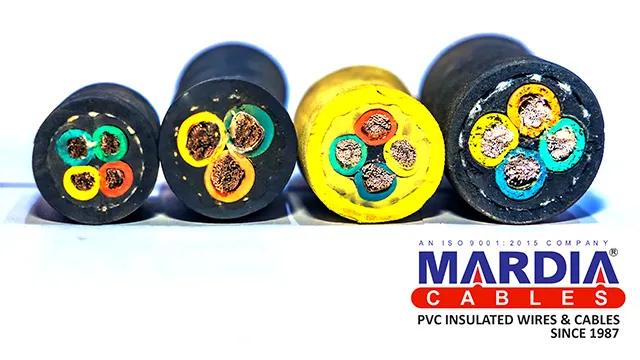


Mardia Cables Elastomer Cables segment in India and has been supplying a wide range of Elastomer Cables to various industry segments viz. Railways, Ship-Building, Steel, Cement, Power plant , Defense, Mining sector, construction sector , Solar Panels Etc.
Multicore Rubber cables used in electronics are insulated with materials like plastic or rubber. These cables are widely used in various applications. They are used for trailing and flexible supply leads in either single or multi core versions. There are different varieties of cable for heavy and medium duty electrical applications used in both residential and industrial purposes. Rubber is more durable, with high levels of water and abrasion resistance and hence these factors make cables made of rubber an attractive choice for outdoor applications
Elastomeric compounds for insulating and sheathing of cables are formulated to meet the requirement of IS 6380, BS 6899, IEC 60502 and other international specification.
Conductor: Annealed Bare/Tinned Copper wires Solid (Class 1), Stranded (Class 2), flexible (Class 5) complying with the requirement of IS 8130‐1984
Separator Tape: Suitable material separator tape may be applied over the conductor
Insulation:General service elastomer compound Type IE1 of IS 6380‐1984 Heat Resisting elastomer compound Type IE2 of IS 6380‐1984 Silicone Rubber Type IE 5 of IS 6380‐1984
Core Identification:Colored insulation, Nos.PE tape, Colored proofed tape, Nos. printing
Fillers: Natural or elastomer suitable for the operating temperature and compatible with the insulating material
Sheath: General service sheath Type SE1/SE2 of IS 6380‐1984 Heavy Duty Sheath Type SE3/SE4 of IS 6380‐1984
Working Temperature of Commonly used Elastomeric Insulating and Sheathing Materials
| Material | Max. Cond. Temp. for continuous operation (Deg C.) | Max. Cond. Temp. for short circuit (Deg C.) | Min. Working Temp. (Deg C.) |
|---|---|---|---|
| Natural Rubber (VIR & TRS) | 60 | 200 | -55 |
| Ethylene Propylene Rubber (EPR) | 90 | 250 | -50 |
| Polychloroprene (PCP) | 70 | 200 | -40 |
| Chlorosupphonated Polyethylene (CSP) | 90 | 200 | -35 |
| Silicone Rubber | 150 / 180 | 350 | -55 |
| HR Natural Rubber (HR VIR) | 75 | 200 | -55 |
| Styrene Butadience Rubber | 60 | 200 | -55 |
| Butyl Rubber | 85 | 220 | 50 |
Cables serve different purposes depending on the way they are designed.
Fill This Form
To download The Technical Data Sheets